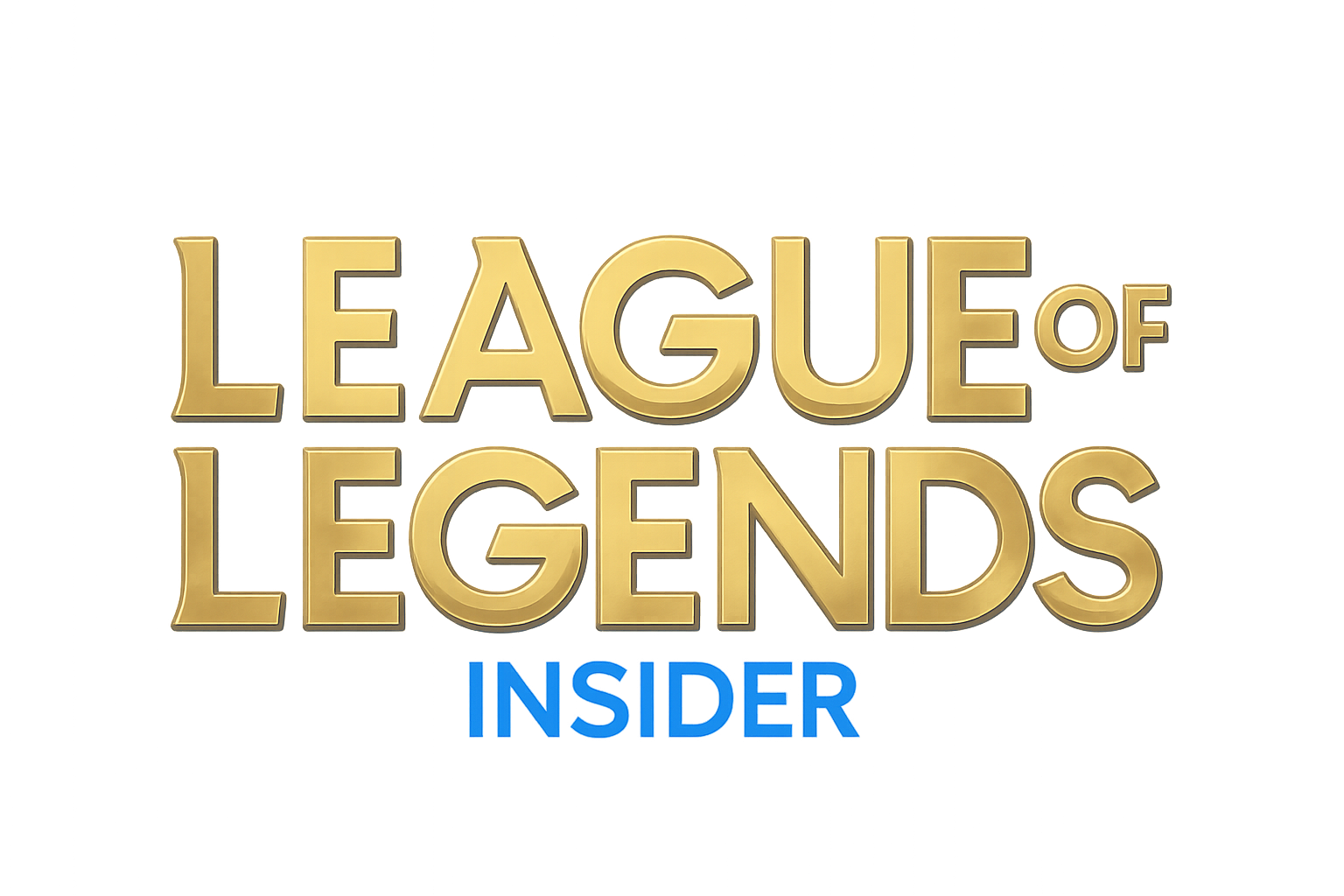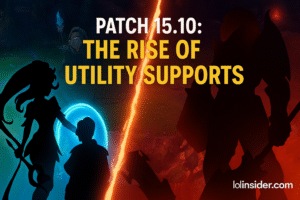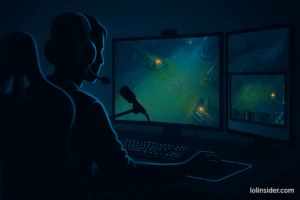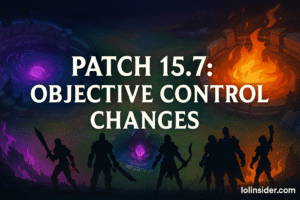League of Legends has dominated the esports scene for over a decade — from its humble beginnings at DreamHack 2010 to the billion-view spectacle of Worlds.
But as the competitive landscape evolves, 2025 marks a turning point for how LoL Esports is structured, watched, and played.
In this article, we explore the future of LoL Esports in 2025 and beyond — including format changes, new regions, AI-driven analysis, and Riot’s long-term vision for competitive gaming.
1. The State of LoL Esports in 2025
The 2025 season introduced major updates to competitive League. Riot’s focus has shifted from “regional pride” to “global integration,” making the ecosystem more dynamic, accessible, and story-driven than ever.
Key Highlights for 2025:
- Unified schedule for LCK, LPL, LEC, and LCS
- Expanded interregional tournaments
- Enhanced AI-powered viewer experience
- Official Academy integration into regional leagues
- New franchise and promotion system
Riot’s goal is clear: make LoL Esports global-first, while reigniting regional rivalries that fans love.
2. The New Competitive Format: Interregional Ecosystem
In 2025, Riot fully merged its ecosystem under the Global Competitive Calendar (GCC) — a structure that ensures consistent competition throughout the year.
New Seasonal Format:
- Spring Split (Regional) – Local rivalries and qualification points.
- MSI 2.0 (International Stage) – Two major splits per year, each with an interregional showdown.
- Summer Split (Global Qualifiers) – Determines seeding for Worlds.
- Worlds (Fall 2025) – The largest international event with 24 teams.
Regions Now Unified Into Tiers:
- Tier 1: LCK, LPL, LEC, LCS
- Tier 2: PCS, VCS, LLA, CBLOL
- Tier 3: MENA, Japan, Oceania, Wildcard
This integration aims to balance viewership, competition, and accessibility.
3. Worlds 2025: Bigger, Bolder, Global
Worlds 2025 marks the 15th anniversary of the championship — and Riot is celebrating with its most ambitious format yet.
Confirmed Features:
- 24 qualified teams (expanded from 22)
- Two-stage Swiss format
- Best-of-3 series during play-ins
- Best-of-5 knockout stage from quarters onward
- AR-enhanced stage visuals and interactive audience zones
Host Regions Rotation (2025–2030):
| Year | Host Region |
|---|---|
| 2025 | South Korea |
| 2026 | Europe |
| 2027 | North America |
| 2028 | China |
| 2029 | Southeast Asia |
| 2030 | Latin America |
Riot’s long-term vision ensures every major region gets its own “home Worlds” experience over the next decade.
4. The Rise of AI and Data in Competitive League
AI has become the unsung analyst behind every team.
From real-time macro breakdowns to draft simulations, AI integration is transforming how teams prepare and fans engage.
AI-Driven Advancements:
- AI Draft Assistants: Simulate pick-ban outcomes based on live data.
- Vision Heatmaps: Predict where players will ward next.
- Automated Highlight Tools: Generate viral clips for social media.
- Predictive Analytics: Forecast win probabilities with 98% accuracy.
Some organizations, like T1 and JDG, already run AI-driven scrim analysis — optimizing player performance frame-by-frame.
5. The Future of Player Development
Riot’s “Path to Pro” system, launched in 2025, connects ranked, collegiate, and academy play under one performance network.
Core Upgrades:
- Global MMR tracking for semi-pro players
- Talent exchange programs between regions
- AI-coach mentorship systems for aspiring pros
- In-game esports missions rewarding ranked consistency
This ecosystem bridges the gap between casual players and the professional stage — a goal Riot has chased for years.
6. The Return of Regional Identity
While the global structure unifies the schedule, regional flair remains essential.
In 2025, Riot introduced “Regional Heritage Weeks,” celebrating the unique culture, music, and rivalries of each major league.
Examples:
- LCK Heritage Week: Focus on legacy teams like T1, Gen.G, and KT.
- LEC Heritage Week: Showcases fan-driven stories and memes.
- LPL Heritage Week: Celebrates “chaos and creativity” gameplay.
Fans get more storytelling and emotion — not just stats and standings.
7. New Emerging Regions to Watch
Esports globalization means new powerhouses are rising fast.
Regions on the Rise (2025–2030):
- MENA: Backed by massive investments and player academies.
- Vietnam (VCS): Known for mechanical outplays and early aggression.
- Japan: Gaining traction through anime collaborations and LoL partnerships.
- Brazil (CBLOL): Huge fanbase, improving infrastructure.
Expect MENA and VCS teams to reach quarterfinals in the next 3 years.
8. Women’s Esports and Inclusivity
2025 introduced Riot’s global Project HER: League, the first worldwide women’s League of Legends circuit.
Structure:
- 8 regional leagues with local qualifiers
- International finals held alongside MSI
- Mixed-gender tournaments allowed at open-tier events
Goals:
- Visibility for female pros
- Equal opportunity sponsorships
- Pathway integration into mainstream leagues
The impact has been massive — more diversity, more inspiration, more growth.
9. Viewer Experience Revolution
Riot’s investment in AR and AI viewing is transforming how fans experience LoL Esports.
New Features in 2025:
- AR Rift Projection: Real-time 3D map analysis during broadcasts
- AI Shoutcaster Companion: Personal commentary tailored to your favorite player
- In-Client Watch Mode: Sync live games with your own camera controls
- Stat Rewind: Replay any moment with stat overlays
The line between spectator and participant is fading — fans are now part of the show.
10. LoL Esports Beyond 2025 – The Next 5 Years
Predicted Trends (2026–2030):
1. Cross-Franchise Integration
Teams may soon operate across multiple Riot titles (LoL, VALORANT, Project L) under a single esports brand.
2. Interactive Fan Tournaments
In-game qualifiers that send community teams to compete in official side events during Worlds.
3. Esports Metaverse Hubs
Virtual stadiums powered by Riot’s “Project Nexus” engine, allowing fans to watch matches in VR.
4. Player-Led Media Expansion
Pro players launching personal brands, podcasts, and lifestyle content around their competitive careers.
5. AI-Coached Teams
Fully automated scouting and training powered by real-time data analysis.
The future of League Esports is more open, immersive, and player-driven than ever.
11. Challenges Ahead
Even with massive progress, challenges remain.
Key Issues to Watch:
- Viewer fatigue from overlapping tournaments
- Sustainability of smaller regions post-franchise model
- Balancing esports and casual player interests
- Maintaining competitive integrity amid AI automation
Riot’s biggest test will be keeping LoL Esports human, emotional, and community-centered.
12. The Future of Pro Players
The next generation of pros won’t just play — they’ll create content, manage brands, and interact with fans daily.
Predictions:
- Multi-role players with hybrid streaming careers
- AI-assisted training replacing solo practice
- International player swaps becoming routine
- Career longevity extended through data-driven coaching
The line between “pro” and “creator” is blurring fast.
13. The Long-Term Vision: A Connected Esports Universe
By 2030, Riot envisions a “Connected Competitive Ecosystem” linking all major titles.
Core Idea:
- League of Legends remains the central hub
- VALORANT and Project L contribute cross-events
- Global Esports Pass rewards fans across all games
The future isn’t just about matches — it’s about the entire Riot ecosystem evolving together.
14. Conclusion
The future of LoL Esports in 2025 and beyond is bright, bold, and deeply interconnected.
From expanded tournaments to AI coaching and inclusive leagues, Riot is reshaping competitive gaming into a hybrid of sport, technology, and culture.
But at its heart, one thing remains constant:
“It’s not just about winning — it’s about the stories that inspire millions around the world.”
As the Rift evolves, one thing’s certain — the future of LoL Esports has only just begun.







